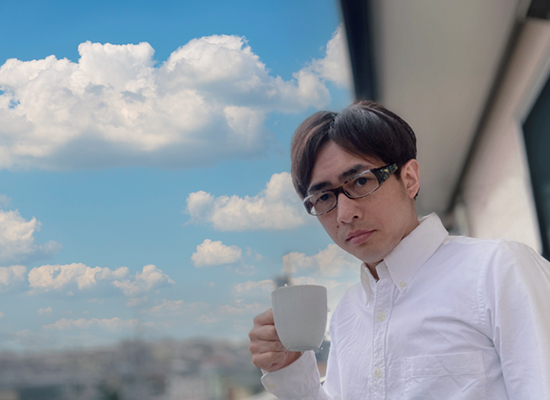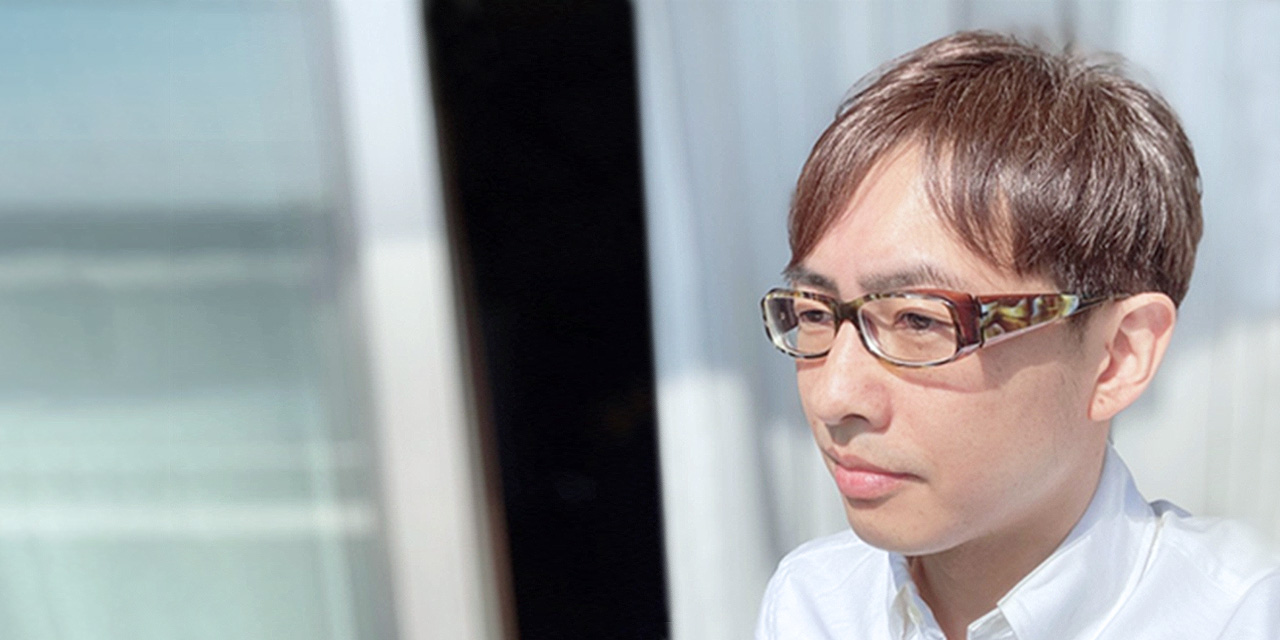As a child, I loved to catch insects and fish and play with them, and to be in close touch with nature after school. But in high school, that "like" vector turned towards chemistry. I really enjoyed all of the experiments in chemistry classes. Although it was rather cliched, I especially liked the experiments involving chemical reactions from mixing chemicals. As I said, in my high school days, I was attracted to chemistry, and so it was totally natural for me to decide to go down the chemistry path. I believe that liking or being inspired by something is a gift. I have always wanted to contribute to society by taking advantage of that.
”Like” = “Gift”
Microscopic observation as a postgrad
I chose surface science, which includes chemical elements, when I entered graduate school. The reason why I chose this path was principally my attraction to a microscope (*1) that allows me to see the arrangement of atoms on the surface of a material. When I was in graduate school, I was using a microscope to study how graphene (*2) is formed by applying heat treatment to silicon carbide. While I was doing this, I discovered a new stable structure as part of the phenomenon. Other material such as metal elements were deposited onto the solid surface in the same way as a semiconductor. On finding a stable structure, they reconstituted themselves!
Research mission
Although Fujitsu is an electronics manufacturer, it focuses not just on current business but also on basic material research. This was the key attraction for me, and led me to decide to join the company. At the beginning, I was working on oxide semiconductors as a research theme, but I was immediately asked to participate in a national project on nanocarbon materials, and I was transferred to the National Institute of Advanced Industrial Science and Technology (AIST). Even now, I really value the opportunity to talk to other researchers in an environment where I can do whatever I can whenever I want. After five years at AIST, I have now returned to Fujitsu, and it was great to get a bird's-eye view of Fujitsu's materials research.
No matter where I am working, my mission hasn't changed since I joined the company. Essentially my focus is on creating new devices using a two-dimensional material such as graphene.
Basically, they change the way that graphene is synthesized to the point where it has better properties. We are now working on developing a new structure that can achieve 100% of the intrinsic properties of a material. Whenever we idenitify a new structure, I always change the device process to match it, validate it, and try to figure out why it wouldn't work if it didn't. I keep on repeating this cycle until all the pieces of the puzzle fit together.
No one becomes a researcher by accident
I think there's something fascinating about science that goes beyond human intelligence. I think it's interesting even if I can't see ahead. But, of course, when you come up against a brick wall, you have to find a way to deal with it through trial and error. At such times, I try to incorporate some of the elements of play into our research process. If I take a completely different approach to an experiment based on just my curiosity, I'll come up with something else that I couldn't possibly imagine, or even a new phenomenon. This approach can lead to breakthroughs. It's incredibly exciting.
As researchers, we are all stumbling around in the dark, with only past reports from other researchers to guide us. It's really fulfilling, because you don't know what will happen next. You are doing something no one has ever done before and could be the very first person in the world to witness it. I have always felt the attraction of being the first person to witness a new phenomenon, and this is what spurs me on as a researcher.
At present, I’m considering how to make the most of the characteristics of graphene by staking two-dimensional materials to develop new physical properties. My research is always in the back of my mind, even when I am relaxing with a drink over dinner or traveling. It is natural thing for me because I love my research. And I think there are a lot of researchers out there who are just like me! Everyone likes research, but I don't think anyone becomes a researcher by accident. We are drawn to it because we love it so much.
Looking back and ahead
In the future, my dream is to produce results that will provide important content for leading academic papers in nature and science. I am fully aware that it is difficult in my field to produce something that can immediately benefit society. But when I look back one day on my research career, I would like to think that I was able to contribute to a better society. I have an unshakable underlying belief that my discoveries will one day provide a legacy for future researchers, just as past researchers have done for us. We are united by a desire to develop science together with and for all mankind.
-
(*1)Scanning tunneling microscope
-
(*2)A one-atom thick sheet comprising carbon atoms linked in a honeycomb hexagon.

Device & Materials Research Center
Graduate School of Science and Technology
Joined Fujitsu in 2009
Curiosity-driven research that creates innovation to transform society
Editor's note
When talking about his research, Kenjiro really lit up. That was my first impression of him. His face shone when he said "I just love it! ". Although Kenjiro used the expression "Like" = “Gift”, I think the difference is whether you can believe in yourself and follow it through based on your talent. Although the saying goes "What one likes, one will do well", that doesn’t take into account the enormous effort that goes into the process. But that’s partly down to the passage of time. What we think of today as being completely natural was a discovery in the past, based on the legacy of past researchers. The same goes for the future, with Kenjiro’s accumulation of “likes” one day becoming the new normal. Let’s keep this idea in our minds and look ahead to an exciting, colorful future.


